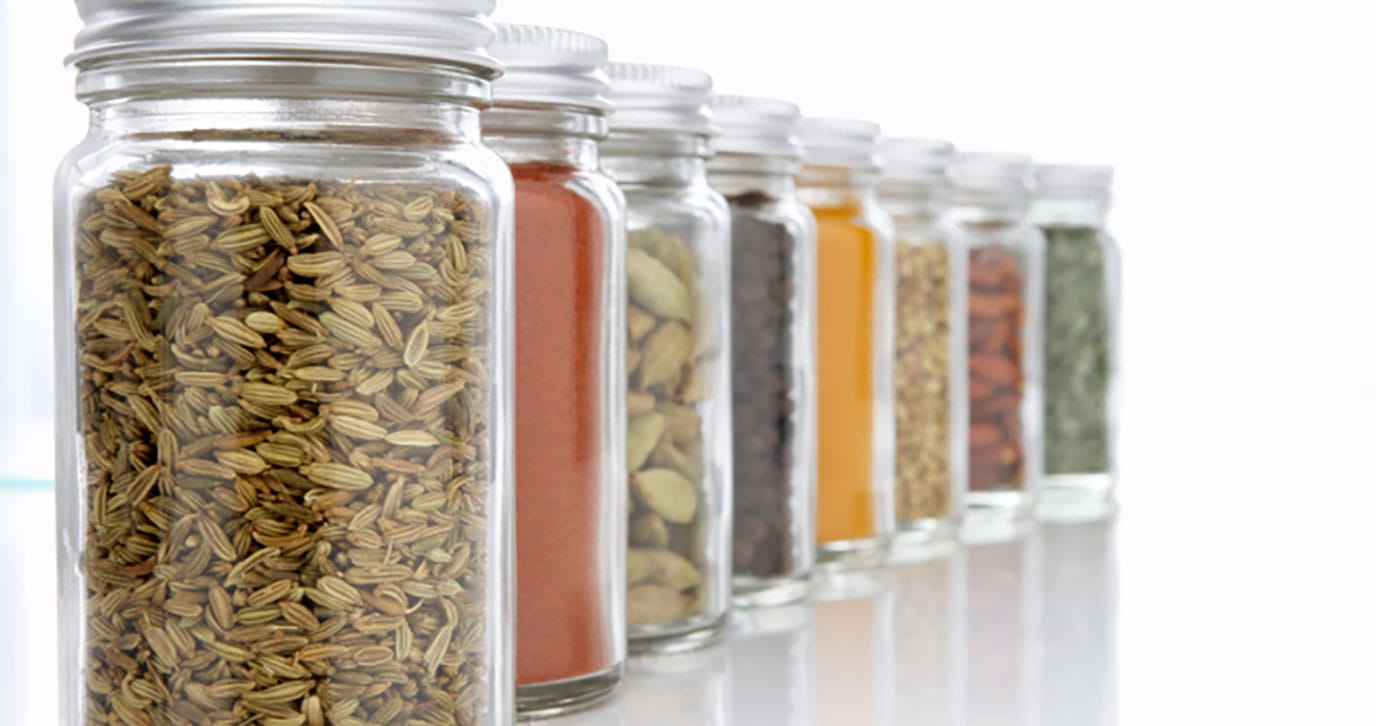The ancient civilizations of China, India, and Arabia valued spices and herbs for their taste, fragrance, preservative effects, and medicinal powers. Today, there is growing interest in identifying the physiologic effects of these ingredients and in learning ways that spices and herbs can increase the acceptability of healthier foods, both prepared and home cooked.
TODAY’S CHALLENGE: IMPROVING HEALTH THROUGH NUTRITION
The link between food and health has never been clearer, and yet dietary change has never been more difficult. Substantial numbers of American adults have intakes of potassium, calcium, vitamin D, and dietary fiber that are lower than recommended levels because many consume suboptimal amounts of vegetables, fruits, whole grains, dairy foods, seafood, and other foods rich in these essential nutrients and food components. New nutrition education tools such as ChooseMyPlate.gov may help some consumers make healthier food choices, but taste reigns supreme, and many continue to eat more calories, fat, saturated fat, and sodium than they need.
Physiologic Roles of Spices and Herbs
Research has begun to identify not only culinary uses but also other potential benefits of spices and herbs in human health. In the past decade, the number of clinical trials involving spices and herbs listed on ClinicalTrails.gov and funded by public and private sources increased 6-fold. Studies of the health effects of bioactive components found in spices, herbs, and other botanicals are also being carried out through the National Institutes of Health’s funding of Botanical Research Centers and its efforts to translate research findings into practical benefits for human health.
Opportunities for Improving Consumer Eating Patterns
Many opportunities exist to improve Americans’ dietary patterns. Today, about 38% of consumers report that they use spices and herbs as alternatives to salt for flavoring foods in an effort to reduce their sodium intake. Dietitians recognize this approach as being effective, but much more can be done to spread the word. Encouraging consumers to use spices and herbs when cooking, for example, can help reduce the intake of less desirable foods and nutrients, particularly salt, solid fats, and sugar, while increasing the intake of vegetables and other high-fiber foods. Their use can also make menus more interesting. The time is ripe to seize opportunities to build awareness about the taste benefits of spices and herbs and how they can contribute to healthy eating patterns. A small number of consumers rank spices and herbs among the top foods with benefits beyond basic nutrition, but many others do not perceive the added health benefits of spices and herbs. As the research accumulates that supports health benefits, this state of affairs may change. Finally, and perhaps most importantly, new research suggests that adding spices and herbs to foods and meals can increase the acceptance of healthy foods by making them more flavorful. These new data suggest there is an opportunity to help consumers improve their diets by learning to enjoy novel spices and herbs, experimenting with new recipes, and mastering new cooking techniques (see pages S4–S6, S8–S9, and S14–S15).
CONCLUSIONS
The number of studies about spices and herbs in both the scientific literature and in the popular press has increased dramatically since 2004. Moreover, consumers are demonstrating a preference for foods with more flavor as evidenced by the increased national appeal for regional cooking styles such as barbecue and spicy foods such as chili, tacos, and crab cakes. Health professionals, researchers, and policymakers have an opportunity to work together at the interface of food science and nutrition to help translate the science of spices and herbs into improved consumer eating patterns.















